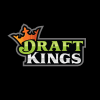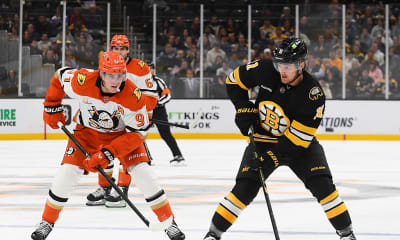Your Guide to the NHL 2025/26: Pacific Division

Current bets
From Vegas’ pursuit of another Stanley Cup to San Jose’s long-term rebuild – the Pacific Division houses both the league’s biggest favorites and some of its most uncertain projects.
Read my guide to:
Below you’ll find answers to the most common questions ahead of the season – from when the puck drops to who’s favored to lift the Cup.
How have your betting tips performed in previous seasons?
I have a long track record of documented betting records that have always been public and accessible. That will also be the case this year. Last season my focus was more on a private group, which meant fewer plays were posted publicly on social media. But now I’m back with tips as before – mainly high-limit bets on game days, occasionally spiced up with a prop when the right spot comes along.
- NHL High Limit (2021/22–2023/24): 1,335 bets, +7.32% ROI
When does the NHL 2025/26 season start and end?
The 2025/26 NHL season begins on October 7, 2025, and the regular season ends on April 16, 2026. After that, the Stanley Cup Playoffs take over, running as usual well into June.
In the middle of the season, Olympic hockey in Milan 2026 will be played, scheduled for February 8–22, 2026. The NHL will make an official break during these weeks, meaning league play pauses while the world’s best players suit up for their national teams. This marks the first time since Sochi 2014 that NHL players participate in a Winter Olympics, making the season extra special—with an intense schedule before the break and a packed finish afterward.
How do divisions and conferences work?
The NHL is divided into two conferences: the Eastern Conference and the Western Conference. Each conference is further split into two divisions.
Eastern Conference
Atlantic Division
Metropolitan Division
Western Conference
Central Division
Pacific Division
Each division contains eight teams, meaning both the Eastern and Western Conference consist of 16 teams each.
When it comes to the playoffs, the top three teams in each division qualify automatically. In addition, there are two so-called wild card spots in each conference. These go to the two teams with the highest number of points in the regular season that did not already qualify via a top-three finish in their division.
This means the distribution is not always exactly even between the divisions. Sometimes one division can send as many as five teams to the playoffs while the other only gets three. This system ensures that the best teams in the conference as a whole are rewarded—not just the ones within a particular division.
Who won the Stanley Cup last season?
The Florida Panthers were crowned champions in 2025 after defeating the Edmonton Oilers 4–2 in the Final series. In the decisive Game 6, the Panthers cruised to a 5–1 victory in front of their home crowd.
Sam Bennett was named Playoff MVP after a spectacular postseason with 15 goals, while Sam Reinhart delivered a historic performance in the Final by scoring four goals in a single game—something that hadn’t happened in a Stanley Cup Final since 1957.
It was the Panthers’ second straight title and their third consecutive Stanley Cup Final appearance.
Who are the favorites this season?
Heading into this season, the Florida Panthers are once again the favorites according to the betting odds—and it’s hard to argue against that. The team has reached three straight Stanley Cup Finals, winning two of them, and still has a core of players who know exactly what it takes to go all the way.
But the competition is fierce. The Edmonton Oilers, Carolina Hurricanes, Colorado Avalanche, Dallas Stars, Vegas Golden Knights, and Tampa Bay Lightning are all legitimate contenders capable of challenging the Panthers for the title.
1.
 Vegas Golden Knights – Star power and depth make them the team to beat
Vegas Golden Knights – Star power and depth make them the team to beat
The Vegas Golden Knights enter the season with a major injection of top-end talent. No club made a bigger addition over the summer than Vegas, which managed to land Mitch Marner at a perfectly reasonable price. He changes the entire dynamic of the team’s attack and, together with Jack Eichel, forms a top line that can measure up to any in the NHL. Marner brings not only offensive production in abundance but also high-end defense – a luxury for a team that already had Eichel, Mark Stone, Tomas Hertl, and William Karlsson in the fold.
No club made a bigger addition over the summer than Vegas, which managed to land Mitch Marner at a perfectly reasonable price.
Already last season, Vegas had one of the league’s most well-balanced offenses, with eight different players reaching at least 15 goals. Dorofeyev and Hertl stood out with over 30 each, Eichel finished with 28, while Barbashev and Howden both scored 23. Behind them, Stone, Roy, and Olofsson added additional double-digit tallies. With that breadth of scoring as a base, the team becomes even harder to stop when a player like Marner is added – an offense that was already deep now also has the top-end edge that can decide games on its own.
The biggest question mark is on the blue line. Alex Pietrangelo announced this summer that he’s stepping aside indefinitely due to hip issues, even if he hasn’t completely closed the door on a comeback. Rehab has brought progress, but in practice Vegas is planning for a season without its most experienced defenseman. His absence puts more responsibility on Shea Theodore, Brayden McNabb, and Zach Whitecloud, while younger names like Kaedan Korczak get the chance to step up. The defense is still of good quality, but it’s no longer among the very best in the league – that’s how high the standard has been in recent years.
In goal is Adin Hill, perhaps not a goalie who draws the biggest headlines but who has repeatedly shown he can deliver steady play over a full season. He’s good enough to keep the Golden Knights in games even when the play sputters, and he’s already proven he can handle the pressure in the decisive moments.
In summary, Vegas is built to win. This is one of the most complete and ready rosters in the NHL, with both top-end talent and depth. The forward group can undoubtedly be counted among the league’s best, if not the very best – not just thanks to the stars, but because there are dangerous goal scorers on all four lines. That’s a depth very few teams can match. When combined with the winning culture already ingrained in the walls and the experience that only teams with Stanley Cup trophies in the cabinet can carry, the picture is clear: the Golden Knights enter the season as an obvious contender. With Marner, Eichel, and Stone at the forefront, and a team that knows exactly what it takes to go all the way, Vegas is once again one of the most feared teams in the NHL.
2.
 Edmonton Oilers – Third time’s the charm?
Edmonton Oilers – Third time’s the charm?
The Edmonton Oilers enter the season with two straight Final losses in the rearview – and the feeling that time is running out. McDavid and Draisaitl have carried the team on their shoulders for years, and even though they continue to deliver at a level most players in the world can’t even dream of, the question is how much more they can take. Losing two Stanley Cup Finals in a row takes a toll on both body and mind, and even if the Oilers are still a top team, there’s an underlying concern that we’re approaching the limit of what two players can accomplish on their own.
McDavid and Draisaitl have carried the team on their shoulders for years, and even though they continue to deliver at a level most players can only dream of, the question is how much more they can take.
The summer departures weren’t catastrophic individually, but together they made the roster thinner. Evander Kane, Viktor Arvidsson, Connor Brown, and Corey Perry provided depth and experience, and even if none of them were in peak form, they were pieces that made the Oilers harder to stop. Coming in instead is Andrew Mangiapane, who could get a boost in a larger role but is also coming off a downward trend, as well as rookies like Ike Howard and Matthew Savoie. For the Oilers to maintain the same level as before, at least one of these young players needs to quickly establish himself as a reliable top-nine forward.
The problem is the Oilers have already shown a tendency to lean too heavily on their stars. When Ryan Nugent-Hopkins went from a 100-point player to barely half that and Zach Hyman cooled off, it became clear how vulnerable the team is when the complements don’t deliver. The power play, long an unmatched weapon, suddenly looked more human during the regular season. McDavid and Draisaitl can always crank it up when it counts, but the question is how long they should have to carry a system where the margins are shrinking around them.
On defense, the structure is intact with Mattias Ekholm as the defensive anchor and Evan Bouchard as the offensive driver. Since arriving from Nashville, Ekholm has been the steady hand giving Bouchard room to blossom into one of the league’s most productive defensemen. But Ekholm turns 35, and the injury that hampered him in the playoffs leaves questions about whether he can hold the same level over a full season. Nurse, Walman, and Kulak are all steady pieces, making the blue line solid but not extraordinary.
At the back remains the major concern: the goalie tandem of Stuart Skinner and Calvin Pickard. In the regular season they can produce perfectly decent numbers, but when it really matters in the playoffs, they haven’t measured up. Two straight Final losses have shown more than anything that goaltending is still the team’s Achilles’ heel. For the Oilers to take the final step, they’ll need either a sudden career year from Skinner or to add a true No. 1 during the season. Right now, it’s hard to see either of the two current options as the one lifting the Cup.
The Oilers are still a lock for the playoffs and will always be a threat as long as McDavid and Draisaitl are in their primes. They’ve shown they can carry the team all the way to the Final, and their ceiling is still Stanley Cup. But the path there looks steeper compared to the last two seasons. The Western Conference has gotten tougher, the roster feels somewhat weakened, and the question of how much more McDavid and Draisaitl can carry on their own grows louder each season.
3.
 Vancouver Canucks – Playoff fate rests on Pettersson’s shoulders
Vancouver Canucks – Playoff fate rests on Pettersson’s shoulders
The Vancouver Canucks enter yet another season where the playoff line feels like the natural bar. The team is neither weak enough to implode nor strong enough to push into the group of obvious top contenders. Much will be decided by two players: Thatcher Demko in goal and Elias Pettersson up front. If the goalie stays healthy and the Swede finds his old level, there’s still enough quality for Vancouver to mix it up in what’s a fairly open Pacific.
Losing J.T. Miller during the season hurt offensively, but it also seems to have cleared the air in a locker room that had long been infected. Even so, he was a reliable point producer (437 points in 404 games) and one of the team’s most driving forces when he was on the ice. Replacing that production one-for-one is hard, but sometimes balance and dynamics matter more than raw stats. If Pettersson gets a fresh start and players like Conor Garland, Filip Chytil, and maybe even Jonathan Lekkerimäki can step into bigger roles, there’s an offense that can at least keep the team in the playoff chase. The addition of Evander Kane from the Edmonton Oilers isn’t a full replacement for Miller, but he brings size and finishing ability that could be useful in a top six that has sometimes looked too soft.
On defense, the strength is clear. Quinn Hughes is one of the best defensemen in the world and the hub of everything Vancouver does, and together with Filip Hronek he forms a top pair that provides stability. Behind them there’s enough depth to keep the team from collapsing defensively. Marcus Pettersson, who arrived last season, may not always do the most spectacular things, but his hockey sense and stability give the Canucks invaluable depth on the blue line.
The big cloud of concern is at center. The loss of Pius Suter leaves a hole that isn’t easily filled, and expecting Chytil to carry the load as the second-line center is risky given his injury history. This is where the Canucks could come up short against the best teams, and it could be the difference between the playoffs and another spring on the golf course.
The Canucks have lived on the bubble for over a decade, and much suggests it’ll be the same this season. The difference compared to teams like the Los Angeles Kings is that Vancouver has a much higher upside. With Demko, Hughes, and Pettersson in top form, the team can reach heights beyond many of its competitors around the playoff line. That’s why Vancouver is still a team with the potential to make the playoffs – but it requires the stars to stay healthy and at least one of the younger players to take a step forward. If all that happens, the path back is there. If not, another season just below the line awaits.
4.
 Los Angeles Kings – Kopitar’s last ride leaves more questions than answers
Los Angeles Kings – Kopitar’s last ride leaves more questions than answers
It’s almost become a tradition not to believe in the Los Angeles Kings – and yet always feel a certain sympathy for how they play hockey. The team has several skilled players who do the thankless work quietly: Mikey Anderson’s defensive grind, Phillip Danault’s exceptional shutdown play, and an Anze Kopitar who, even today, is a top-class two-way center. But Kopitar has already announced this will be his last season, and with the heavy losses on the blue line, the question feels bigger than ever: how highly should we really rate the Kings?
Summers in Los Angeles often bring small, smart tweaks, where players who didn’t work elsewhere get a fresh start in the Kings’ system. This summer felt different. Vladislav Gavrikov and Jordan Spence out – Cody Ceci and Brian Dumoulin in. It’s hard to describe it as anything other than a very clear downgrade, especially since the cost was the same. Drew Doughty still carries a heavy load on the blue line, but he’s now 35 and the pressure grows on Brandt Clarke to step up quickly.
The offense is still fairly deep, but not star-studded. Adrian Kempe is a top-class goal scorer, Kevin Fiala puts up points, and Quinton Byfield has the potential to take the next step. But the team lacks a player who can carry the offense on his own, and when Kopitar says goodbye, the hole down the middle will be hard to fill.
What speaks in the Kings’ favor is that the Pacific Division isn’t particularly strong outside of Edmonton and Vegas. Darcy Kuemper is also a goalie who can win games on his own, even if he’s unlikely to repeat last year’s Vezina-level form. The question is whether that’s enough. The Kings have been bounced in the first round four years in a row by the same opponent, and although there’s a good chance they’ll make the playoffs again, the team feels weaker than before. The hope likely lies in the younger players taking another step forward.
5.
 Anaheim Ducks – Young core gets to grow under Quenneville
Anaheim Ducks – Young core gets to grow under Quenneville
The Anaheim Ducks have long been one of the league’s most promising yet frustrating projects. Last season they took a major step forward – from 59 to 80 points – thanks primarily to their young players truly asserting themselves. Leo Carlsson finished the year like a rocket and looks ready to establish himself as a key player in the league, Mason McTavish elevated his game in the spring, and Cutter Gauthier showed he could very well become a star. Add Jackson LaCombe, who surprisingly took over as the team’s top defenseman, and Lukas Dostal, who increasingly looks like a future No. 1 goalie, and there are good reasons to talk about a team on the rise.
But the most interesting shift didn’t happen on the ice – it happened behind the bench. Joel Quenneville is back in the NHL after four years away, stepping in with all his experience and three Stanley Cup rings. His way of building relationships and structure is likely to be a clear contrast to the confrontational Greg Cronin, and the Ducks hope “Coach Q” can repeat what he did in Chicago: guide a young core of high draft picks to the next level. The assistant ranks have changed too – Jay Woodcroft is expected to breathe life into the power play after the Ducks posted one of the worst PP percentages in over 20 years last season.
But the most interesting shift didn’t happen on the ice – it happened behind the bench.
There have been changes to the roster as well. Trevor Zegras and John Gibson have left, but Chris Kreider and Mikael Granlund have come in to support the young centers. Kreider is no longer in his prime, but he can still contribute with size and goal scoring, while Granlund adds flexibility and playmaking. Ryan Poehling may not be as flashy, but he adds defensive reliability and will be an important piece on the penalty kill. Together, these additions give Anaheim a very different kind of depth than before.
The question marks remain, though. The defense was among the league’s worst last year, and even if LaCombe, Olen Zellweger, and Pavel Mintyukov all have potential, it’s far from certain that it will be enough to tighten things up. Much also depends on whether Dostal can carry a full season as the No. 1 in goal.
Anaheim is still a team on the rise rather than a finished playoff team. But with Quenneville at the helm, a stronger supporting cast, and a young core taking new steps, there’s reason for optimism. Going from 80 to 90 points and truly challenging for the playoffs might sound like a big leap – but given what they showed in the second half of last season, it’s not at all impossible.
6.
 Calgary Flames – Wolf masks the flaws
Calgary Flames – Wolf masks the flaws
The Calgary Flames were one of last season’s biggest surprises. From being projected as a bottom team, they ended up with 96 points and missed the playoffs only on a tiebreaker. It was an achievement, but also a result built more on variance – and especially on a sensational season from goalie Dustin Wolf – than on the Flames suddenly transforming into a top team. With a goal differential of –13 and a roster without true star power, it’s hard to view Calgary as more than a lower-mid-table team.
Wolf is the team’s lifeline. As a rookie, he was one of the league’s best goaltenders, saved nearly 15 goals above expected, and lifted the Flames from an 80-point level to almost 100. The question is whether that’s sustainable. Sure, he can make the team relevant on his own, but it evokes memories of the Rangers with Henrik Lundqvist: a world-class goalie making the team look better than it really is. The difference is that Wolf is only 24 – perhaps he truly is Calgary’s franchise player to build around.
Behind him, the picture is weaker. The offense lacks a clear first line, and the fact that a 35-year-old Nazem Kadri is still the team’s most reliable forward says a lot. Jonathan Huberdeau is a capable passer but far from the star the Flames hoped for, while players like Coronato, Zary, and Coleman are better suited as secondary support than as leading forces. One bright spot is the third line, where Morgan Frost together with Yegor Sharangovich and Joel Farabee could form an unusually strong third unit if everything clicks.
On the blue line, MacKenzie Weegar is a workhorse and the team’s best skater, but there’s no true No. 1 here either. Rasmus Andersson is useful but no more than a solid third defenseman, and the depth behind that is thin. Hopes rest on super-prospect Zayne Parekh, who has already debuted in the NHL and has the offensive tools the Flames desperately need from the blue line.
In the best case, Wolf repeats his magical season, Parekh breaks out, and a few forwards take steps – then Calgary can fight for a playoff spot again, but that’s a “best-case scenario.” In the worst case, Wolf is once again a lone hero while age catches up with Kadri and Huberdeau, and the Flames fall back to around 70–80 points. Either way, this is still a club in rebuild mode, where the biggest success would be the young players moving in the right direction. The playoffs are secondary – it’s about building the next generation of Flames.
7.
 Seattle Kraken – Four lines, but no top line
Seattle Kraken – Four lines, but no top line
From the beginning, the Seattle Kraken have built their identity on depth rather than star power. Even now, you can argue they can roll four lines that are fine, but in practice it looks more like four third lines than a clear hierarchy where a first line leads the way. That means the team can often keep up in terms of play, but when it’s time to decide games, it’s hard to see who will step up as the game-winner.
Hope lies with the young centers Matty Beniers and Shane Wright. Both have potential, but neither has yet established himself as the star center the team needs. Jared McCann, Jaden Schwartz, and Jordan Eberle produce steadily, but they’re more complementary pieces than offensive engines. The result is a team that always feels competent but rarely dangerous.
Last season’s big revelation was in goal. Joey Daccord had his breakout and was often the difference between an honorable loss or points in the standings. He raises the team’s floor significantly, but it’s risky to lean too heavily on the goalie masking the team’s flaws night after night. He has only one season at that level, and his backup, Philipp Grubauer, was the polar opposite of good – so you get nervous about potential injuries or regression. “Once is none,” as the saying goes.
That’s why the blue line becomes extra important – and it actually looks stronger than many give the Kraken credit for. Vince Dunn, Brandon Montour, Adam Larsson, and Jamie Oleksiak have all proven themselves as reliable NHL defensemen and form a top four of solid quality. The problem is that “good enough” isn’t enough to lift Seattle. All four must perform at their best simultaneously, the forwards have to take more responsibility defensively, and Daccord needs to keep playing at a high level. If all those pieces fall into place, the Kraken can surprise – otherwise the season risks getting stuck in another long series of honorable losses.
I’ve always had a soft spot for this team – probably because I like the idea that you don’t need a star-studded roster to be good. When they hit 100 points a couple of years ago and knocked out the Colorado Avalanche in the playoffs, I wasn’t shy about praising them. But realistically, that probably says more about how much variance sports actually contain. When everything clicks, it’s easy to point to examples of success, just as it is when things go badly. Over the last two seasons Seattle have reached only 76 and 81 points – and that’s likely where we should expect them to end up again this year. I won’t pretend I’m not secretly hoping for a repeat of the 2022/23 success, but hand on heart, it feels far-fetched.
With Lane Lambert as the new coach, you can at least hope for an offensive injection. He was criticized with the New York Islanders for not getting the whole picture right, but under him the team actually produced its best five-on-five offense in years. It did cost them defensively, but it shows he’s not afraid to ramp up the pace and unleash players offensively. The question is whether the Kraken have the personnel to turn that into results – there are no superstars here to carry the team, so several young players need to take steps at the same time. If Lambert balances his offensive ambition with a more stable defensive structure, he could be a lift, but right now Seattle feels stuck in between: not bad enough to crater, but not good enough to truly contend. Another playoff berth looks unlikely.
8.
 San Jose Sharks – The future is brighter than the present
San Jose Sharks – The future is brighter than the present
Over the last two years, the San Jose Sharks have been historically weak, but the darkest period in club history still feels like it’s passed. This team is still in the middle of a rebuild, and realistically fans will have to wait another season or two before results on the ice start to reflect the exciting talent now in the organization.
The entire project is, of course, led by Macklin Celebrini. Even as a rookie he made it clear he’s a franchise player to build around – with 25 goals in 70 games and a game that goes far beyond point production. It’s rare to see an 18-year-old dominate in all three zones like that, and comparisons to McDavid rather than Bedard aren’t entirely far-fetched. With Celebrini in place, there’s finally a sense the Sharks have their superstar, and a young core is growing around him. William Eklund took a big step last year, Will Smith has started to find his way, and prospects like Michael Misa and Sam Dickinson could even sniff the NHL as soon as this season.
The entire project is, of course, led by Macklin Celebrini
The goaltending situation also piques interest. Yaroslav Askarov is now penciled in as the starter, and even if last year produced mixed numbers, the potential was clear. He’s still only 23 and could very well grow into a franchise goalie. Alex Nedeljkovic is there as an experienced backup, but it’s Askarov’s development that will determine whether San Jose finds stability at the back.
The problems are much clearer on defense. Without a true No. 1 defenseman, it will be hard to keep the numbers down, and even if Dmitry Orlov, Timothy Liljegren, and Shakir Mukhamadullin can contribute, the blue line feels more like a collection of waypoints on the road to something better. This is still where the Sharks are most lacking, and there’s a risk of many long nights for Askarov between the pipes.
San Jose will, in all likelihood, be a bottom team again this season. But the difference now compared to the last two years is that there’s actually something to build around – something to hope for. Celebrini, Eklund, Smith, and Askarov form the foundation for the future, and unlike other bottom teams in the NHL, the Sharks already feel more solid in their rebuild. Points-wise, it could be another lean season, but the sense is the Sharks are finally on the right path.
Projected Standings
- Vegas Golden Knights
- Edmonton Oilers
- Vancouver Canucks
- Los Angeles Kings
- Anaheim Ducks
- Calgary Flames
- Seattle Kraken
- San Jose Sharks
Betting Tips
- Vegas Golden Knights to win the Western Conference @ +490 FanDuel
In my eyes, Vegas has the best forward depth in the league – an offense where different players can step up night after night and decide games even through the long regular-season grind. Combined with high-quality goaltending and a strong blue line, the team feels built to handle the regular season even if injuries pop up. Winning the Western Conference is always tough, but right now no team is better equipped than the Golden Knights to bank points night after night.
- Vegas Golden Knights to win Stanley Cup @ +1000 FanDuel
The Golden Knights are built to go the distance. The enormous depth up front, topped by stars like Eichel, Marner, and Stone, gives the team all the ingredients needed for another run to the Final. They already know how to win – the 2023 Stanley Cup proved it – and with Mitch Marner as the spice beside Jack Eichel, the offense gains a new dimension. Vegas has the top-end talent, depth, and experience to be very hard to stop this spring.
- Vancouver Canucks Over 89.5 points @ -106 FanDuel
The Canucks have long lived on the playoff bubble, but the build looks stable enough to get them over 90 points. Quinn Hughes is one of the league’s best defensemen, Thatcher Demko gives the team a chance to win night after night as long as he’s healthy, and Elias Pettersson still has the capacity to carry the offense. The depth isn’t the sharpest, but there’s enough top-end talent and defensive structure for Vancouver to be a solid regular-season team rather than one that collapses. At 89.5, this is a points line the Canucks should clear if their key players deliver as expected.
Current bets

+21. Play responsibly.
Best sports bonuses of the week















